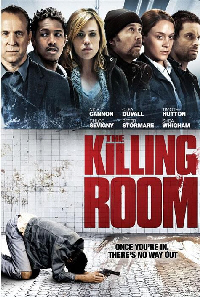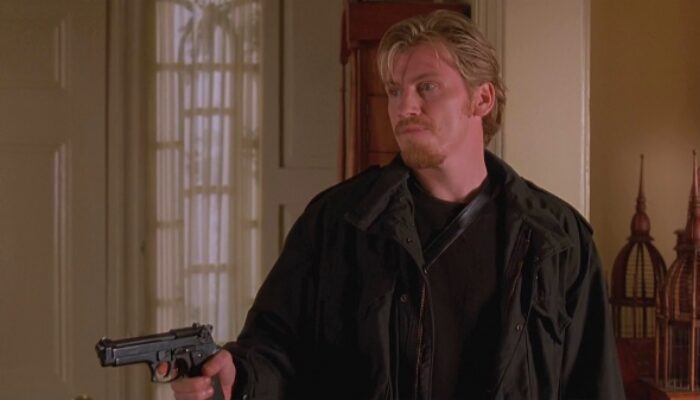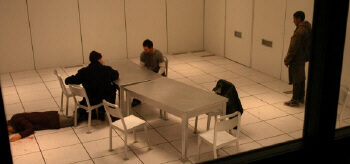Film Review: The Killing Room

Ms. Reilly and the killing room occupants are brought together because of the MK-Ultra Program.
MK-ULTRA was the code name for a covert CIA mind-control and chemical interrogation research program, run by the Office of Scientific Intelligence. The program began in the early 1950s, continuing at least through the late 1960s, and it used United States citizens as its test subjects. The published evidence indicates that Project MK-ULTRA involved the surreptitious use of many types of drugs, as well as other methods, to manipulate individual mental states and to alter brain function.
Advertisement
The nature of this particular MK Program is surprising; logically in the world we now live in, and as morally reprehensible as its predecessor.
After it is revealed what program she is interviewing for, Ms. Reilly asks: “This is the killing room. Is that what you call it?” Dr. Phillips (Peter Stomare) replies: “Most people can’t even look in that room. You can.” The same can be said for people’s tolerance for on-screen violence and how much he or she can take in one sitting but this is a mental digression most will not take while watching The Killing Room. Once Ms. Reilly reaches a certain point, which turns out to be right at the beginning of her interview, there are only two paths she can take, mirroring the situations the occupants face in the killing room. There is no turning back.
The killing room batters its occupants with pre-determined and measured stimuli as their responses are carefully evaluated. Throughout the film, the viewer discovers that it is not only the killing room occupants who are being tested but the new recruit, Ms. Reilly, as well and not in the way we are led to believe initially. The viewer eventually understands this as the extent and ramifications of her evaluation are hidden until Act 3 of The Killing Room.
Out of all the good performances in the film, it is Chloe Sevigny’s that stands out. She goes through the greatest range of emotion and her moral dilemma is palpable, unlike her cold evaluator, Dr. Philips. Dr. Philips has most-likely killed many candidates to become as nonpartisan as he is about it. During the interview conducted by him, Ms. Reilly sees nightmarish things she never dreamed of, even as she woolgathers opposite scenarios.
The rats in the maze are all good, no surprise from Timothy Hutton, who plays Crawford Haines but big surprise from neophyte Nick Cannon (Paul Brodie).
One of best lines of dialogue (along with one of the best deliveries in The Killing Room) is when Dr. Philips tells Ms. Reilly why the MK Program chose her: “There’s been some criticism. That your cold, self-serving. I read somewhere that one of your supervisors labeled you as ruthless. I just wanted you to know that’s why we chose you.” A more fastidious appraisal of Ms. Reilly and her personality can not be found. Very precise and insightful.
The precision of the dialogue and the acting notwithstanding, other noteworthy attributes of The Killing Room are its score, camera work, and military detail. The score to The Killing Room is far better than what the viewer will be expecting, much like the score for Metal Gear Solid the first time you play it. Highly effective. Also in the same quality range is The Killing Room’s camera work and the military radio chatter that goes on throughout the candidates’ testing. Only those in the armed forces or former MK officials could attest to its authenticity though.
Jonathan Liebesman’s The Killing Room is a tense, emotional film centered in an original environment. There are many instances where it is just two people in the room speaking to one another, bringing to the viewer’s mind that a play is unfolding. It is these scenes, not those housed in the killing room, not the “calculated intimidation” scenes, which propel the film and its narrative forward.
Rating: 9/10
If you enjoyed this article, subscribe to us by Email or Full RSS Feed to be informed when we post new ones.
Related Articles
FilmBook's Newsletter
Subscribe to FilmBook’s Daily Newsletter for the latest news!












